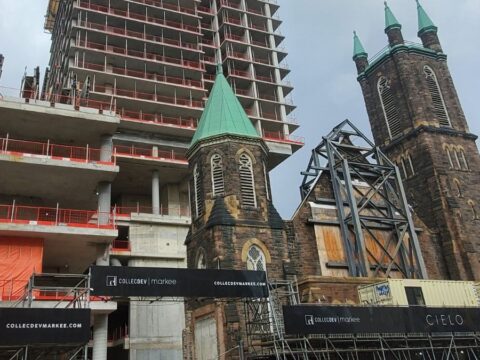The other day, I was sitting in a local coffee shop and noticed several announcements on the community bulletin board. One was a “Body, Mind and Spirit” workshop at the local library. Another was a mindfulness workshop at a nearby retreat center. The third was a meditation retreat teaching contemplative practice. I was surprised that the coffee shop was such a flourishing conduit of spiritual nourishment. All of this was happening beyond the church.
Theologian Karl Rahner has said, “The Christian of the future will be a mystic, or not exist at all.” I believe that he is right. Many people may have given up on institutions like the church, yet they are actively seeking deeper connection. Oddly, they are finding other places and other ways to deepen and nurture their soul life — but what if the church could find ways to give this nourishment?
You may unsubscribe from any of our newsletters at any time.
I have discovered that the heart of our congregation, Hillhurst United in Calgary, is our contemplative ministry. It started small, but now there is a core group of about 40 people who show up at 7 a.m. every Wednesday morning to participate in this practice. We sit in the sanctuary, lit by candles, and are called together by a prayer bell.
Prayers begin with a question, “What did you notice on your way here?” People share their responses: “I noticed the full moon shimmering on a puddle of water.” Another says, “I noticed a rabbit scampering across the snow.” Or, “I felt the wind on my face.” This question encourages us to notice intentionally; contemplation is about this kind of attention.
The next hour includes teaching, chanting, scripture, and both religious and non-religious music — but perhaps the most important element is a significant time of silence, about 30 minutes. Interruptions happen: someone coughs, a siren blares, a child entering the church daycare cries. But these aren’t intrusions. Everything belongs in this quiet listening, and we focus on the Divine Presence, which is available to and a part of each one of us. We conclude the hour with the singing of the Lord’s Prayer, joining hands.
This gathering isn’t a retreat from the world. Rather, it is deep engagement with everything around us. So often we are quick to classify things as good or bad, right or wrong. This “first gaze” can lead to judgement, negativity or fear. Instead, the contemplative path calls us to focus on the “second gaze” — staying open and reserving judgment. There is wisdom in this second gaze, when we practice breathing and widening our perspective. When we do so, we awaken to a deeper wisdom and wider, more sacred perspective.
This requires more being than doing. As a novice in this practice, I am not always comfortable with this call to be present. I prefer to fix, to do, to organize. But contemplation welcomes life’s messiness and realness, and it is from this place that transformation begins.
Mystics aren’t special people, or more holy people. But by taking the time to be still and notice more deeply, they often become more loving people, filled with gratitude and peace.
At Hillhurst, this path guides all of our actions as a community and deepens our social justice initiatives. It helps us accept our failures and encourages a deeper, more compassionate love for all of creation. Contemplation is not a regimented program or course designed to grow your church, yet growth and depth occur — and maybe it will be the way to invite the people at the coffee shop into the church.














